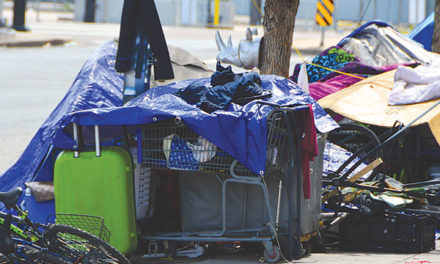Losing Proposition
57 equals crime as violent felons hit streets
By Dan Tibbitts
January 2023
As crime surges in our neighborhoods, we look to Mayor Darrell Steinberg, our City Council and police department to respond. We want local authorities to make our streets safe again.
But are safe streets even possible when we have councilmembers such as Katie Valenzuela, who advocates to defund police and refuses to hold people accountable in the homeless community who break the law? This is where governments fail.
Our problems don’t stop at the city limits. The surge in crime is directly linked to state law, primarily Proposition 57.

Proposition 57 passed with 64-percent voter approval in 2016. It was designed to ease parole requirements for non-violent felons. Unfortunately, one provision in Proposition 57 regarding credit for parole using “good behavior,” “work experience” and “education” was not specific to non-violent felons.
Gov. Gavin Newsom and Kathleen Allison, his political appointee who leads the California Department of Corrections and Rehabilitation, apply the rules to both violent and non-violent felons.
The governor wants to release 76,000 felons early, non-violent and violent. Where does this number come from?
At the beginning of the Newsom administration in 2018, there were approximately 150,000 felons in California prisons. If you subtract the number of felons on death row and sentences that restrict or prohibit parole, the result is 76,000.
Many of these 76,000 felons were guilty of heinous crimes. It’s not publicly known how many have been released. The state corrections department is not transparent with this data. Speculation is about 50,000 have returned prematurely to our communities.
No entity tracks statewide crimes committed by felons released under Proposition 57, but state authorities should track it. Thankfully, within Sacramento County, the district attorney’s office collects some data.
Through June 2021 in Sacramento County, approximately 5,000 felons were released early from prison under Proposition 57. Between 2018 and June 2021, 1,700 of those 5,000 early releases committed about 4,000 felonies in our county.
Applied statewide, the numbers suggest approximately 60,000 felony crimes.
My sister Mary Kate Tibbitts was murdered by an early release felon. This person, upon leaving prison, became homeless. He resumed his substance abuse on the streets.
In the early days of Proposition 57 releases, corrections officials cared if felons had a home address. If not, authorities tried to help the parolee find a place to live.
But housing felons was a burden. Soon enough, authorities began to simply note when parolees were anticipated to become transients upon release. Again, the corrections department is not transparent with this information.
Clearly, a number of those 5,000 early release felons in Sacramento County are homeless.
We have almost 10,000 homeless people in Sacramento County. Many have substance-abuse problems. I’ve heard estimates that 80 percent are drug addicts. Some are hardened criminals released early from prison.
We don’t know the real numbers. Your guess is as good as mine whether the person who killed my sister is the only homeless and violent felon in Sacramento—or if there are 5,000 others, or some number in between. But no one should doubt that career criminals exist among our local homeless population.
Another certainty: Some of these early release felons are drug traffickers. If drug dealers are released early, it’s logical for them to assume the consequences of peddling drugs aren’t too severe. Why not get back into business?
With our revolving door of incarceration under Proposition 57, how do we expect law enforcement to push back the tide of surging crime, especially with fewer officers on the street? When you consider the numbers, there can be no doubt why crime is surging.
Dan Tibbitts can be reached at dan.p.tibbitts@sbcglobal.net.














